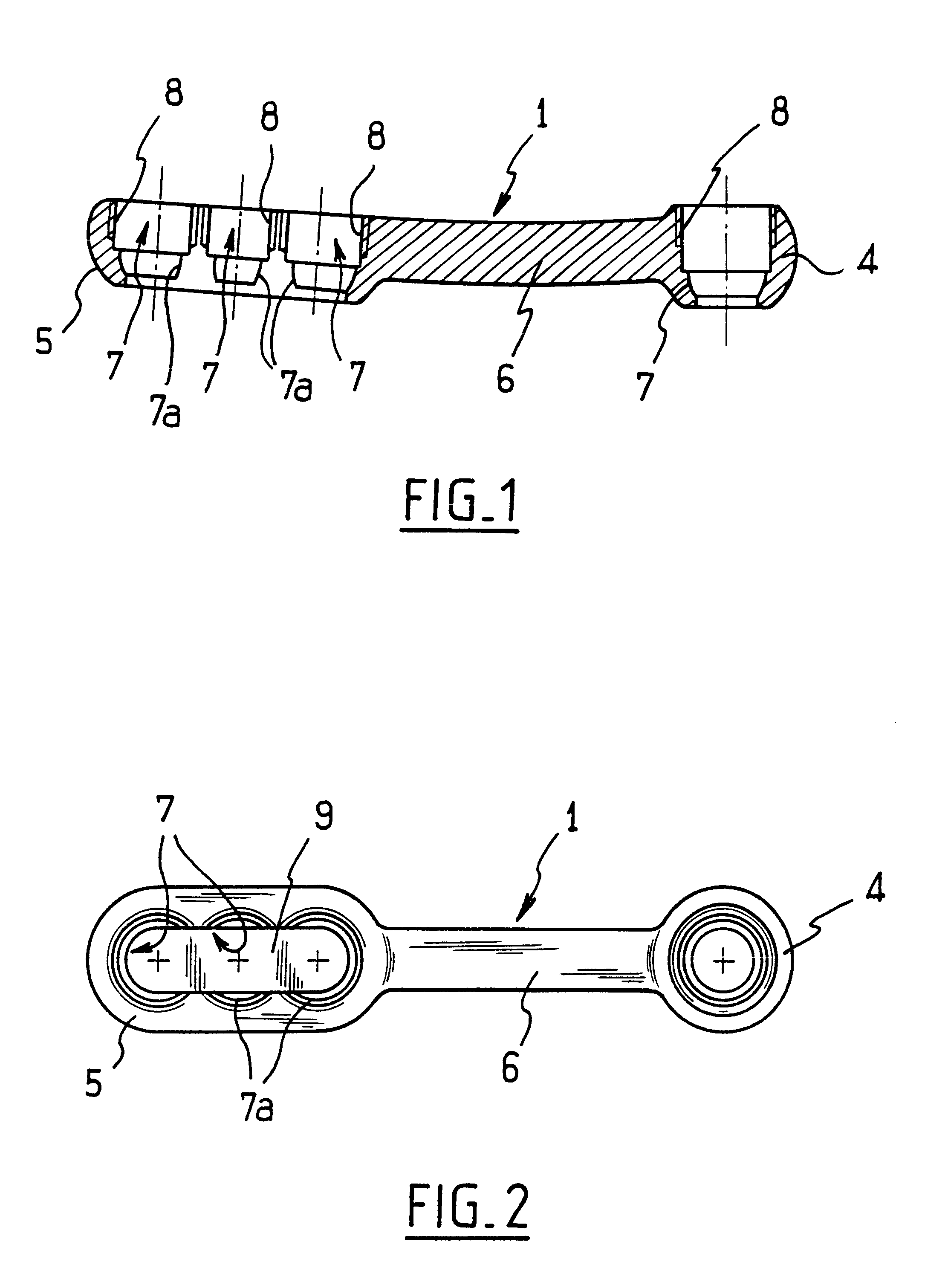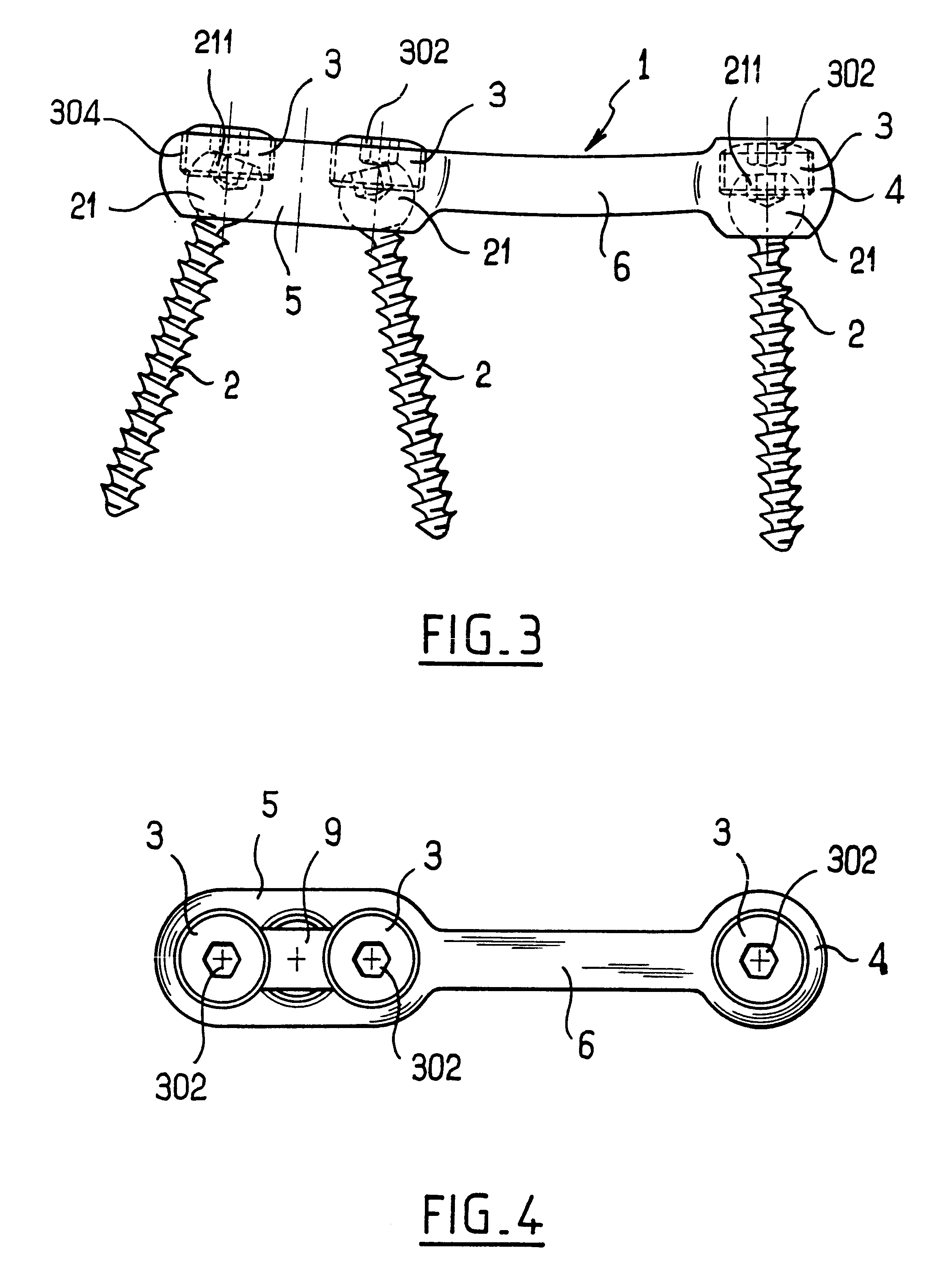Device for fixing the sacral bone to adjacent vertebrae during osteosynthesis of the backbone
a technology of sacral bone and adjacent vertebrae, which is applied in the field of bone fixing devices, can solve the problems of sacral bone and sacrum block or plate known in the prior art, lack of flexibility in use of devices, and risk of fastening screws becoming unscrewed, etc., and achieve the effect of reducing friction
- Summary
- Abstract
- Description
- Claims
- Application Information
AI Technical Summary
Benefits of technology
Problems solved by technology
Method used
Image
Examples
Embodiment Construction
As a preliminary point, it should be observed that elements or portions that are identical or similar from one figure to another are designated, wherever possible, by the same reference symbols, and are not described again on each occasion.
With reference now to FIGS. 1 and 2, there can be seen a sacrum-fixing element given overall reference 1 and made up of three portions: an upper eyelet 4, a sacrum plate 5, and a rod 6, e.g. a cylindrical rod, interconnection the eyelet and the plate. In profile, the overall shape of the element 1 is curved to comply with lordosis, as can be seen in FIG. 1.
A series of holes 7 is formed through the plate 5 in alignment with the long direction of the element 1 and for receiving bone-fastening screws 2.
Preferably, a range of models for the element 1 is offered to the surgeon, different models having, in particular, different lengths of rod 6, and within the plate 5, different numbers of holes for bone-fastening screws.
As shown in FIG. 3, in a three-h...
PUM
 Login to View More
Login to View More Abstract
Description
Claims
Application Information
 Login to View More
Login to View More - R&D
- Intellectual Property
- Life Sciences
- Materials
- Tech Scout
- Unparalleled Data Quality
- Higher Quality Content
- 60% Fewer Hallucinations
Browse by: Latest US Patents, China's latest patents, Technical Efficacy Thesaurus, Application Domain, Technology Topic, Popular Technical Reports.
© 2025 PatSnap. All rights reserved.Legal|Privacy policy|Modern Slavery Act Transparency Statement|Sitemap|About US| Contact US: help@patsnap.com



